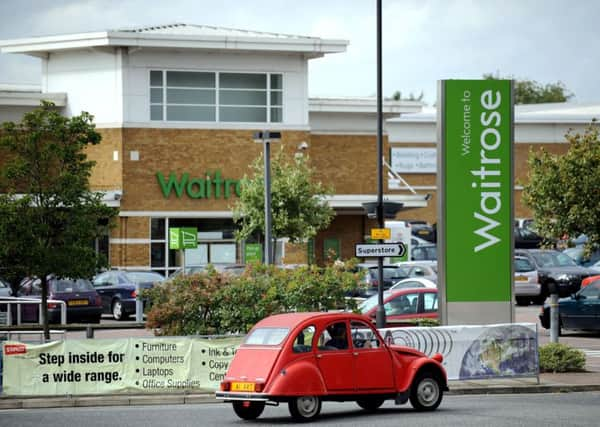Living near a Waitrose '˜puts 10pc on value of your house'; Aldi not so much


The “Waitrose effect” could help to add nearly £40,000 to the value of a home, the study from Lloyds Bank suggests.
But it is not just “premium” brands that can add value to a nearby property. Living near discount chains Aldi and Lidl could also help to boost the value of a property, according to the findings.
Advertisement
Hide AdAdvertisement
Hide AdLloyds Bank compared average house prices in postal districts with a supermarket from a national chain with typical property values in the wider towns to calculate the price premium paid for homes located near supermarkets. The research covered homes across England and Wales.
It found that living near any supermarket chain could add around £22,000. But homes near a Waitrose are worth £38,666 or 10% more typically than those in the surrounding area.
In Yorkshire, Waitrose has branches in Otley, Harrogate, York, Meanwood in Leeds, and Willerby in the East Riding.
Properties near a Sainsbury’s or a Marks & Spencer command a premium of around £27,000, while those near a Tesco are worth around £22,000 more than homes in the wider area.
Advertisement
Hide AdAdvertisement
Hide AdHomes near an Asda are worth around £5,000 more than those in surrounding locations, while those near a Lidl have a premium of around £4,000 and properties near an Aldi are valued at around £1,300 higher than homes in the wider area.
Mike Songer, Lloyds Bank mortgage director, said: “Our findings back-up the so-called ‘Waitrose effect’. There is definitely a correlation between the price of your home and whether it’s close to a major supermarket or not.
“Our figures show that the amount added to the value of your home can be even greater if located next to a brand which is perceived as upmarket. Of course, there are many other drivers of house prices beyond having a supermarket on your doorstep, but our research suggests that it is a strong factor.”
Here are the average house prices in postal districts located near a particular supermarket, followed by the average price in the surrounding town, and the premium people pay to live near a particular supermarket, in percentage and cash terms, according to Lloyds Bank:
• Waitrose, £425,428, £386,763, 10%, £38,666
• Sainsbury’s, £316,056, £288,117, 10%, £27,939
• Marks & Spencer, £342,077, £314,895, 9%, £27,182
• Tesco, £272,288, £250,216, 9%, £22,072
• Iceland, £257,055, £237,021, 8%, £20,034
• Co-op, £238,448, £220,545, 8%, £17,904
• Morrisons, £222,462, £211,904, 5%, £10,558
• Asda, £207,771, £202,745, 2%, £5,026
• Lidl, £236,127, £232,201, 2%, £3,926
• Aldi, £196,502, £195,169, 1%, £1,333
Advertisement
Hide AdAdvertisement
Hide AdMeanwhile, the TaxPayers’ Alliance has called for stamp duty rates to be halved, with a view to abolishing the tax entirely.
The group argued that a recent three percentage point increase to stamp duty rates will end up driving up rents, as the costs are passed on to tenants.
The increase, which came into force on April 1, applies to people buying second homes, including buy-to-let investors.
The TaxPayers’ Alliance described stamp duty as a “badly-designed tax which gums up property markets”.
Advertisement
Hide AdAdvertisement
Hide AdIt said the three percentage point increase should be done away with and all stamp duty rates should be halved immediately, with a view to abolishing the tax entirely.
The campaign group said the stamp duty hike for landlords, along with other measures, will tighten housing supply in the lettings market, raising rents.